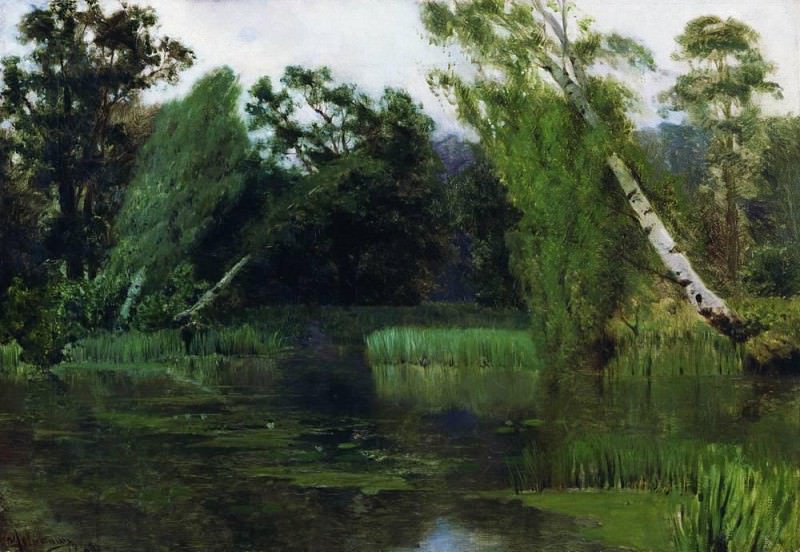In the Park. 1880 Isaac Ilyich Levitan (1860-1900)
Isaac Ilyich Levitan – In the Park. 1880
Edit attribution
Download full size: 1000×689 px (0,1 Mb)
Painter: Isaac Ilyich Levitan
Levitan absorbed the best of Ostroukhov, Serov and Korovin and other friends into his art and created his own style, which came to be called the style of Russian landscape, and rightly came to be considered "Levitanian." Levitan was one of the most important Russian and European landscape artists of the 19th century. His art absorbed the sorrow and joy of the time, his creative quest he embodied in lyrical images of Russian nature.
Description of Isaac Levitan’s painting In the Park
Levitan absorbed the best of Ostroukhov, Serov and Korovin and other friends into his art and created his own style, which came to be called the style of Russian landscape, and rightly came to be considered "Levitanian." Levitan was one of the most important Russian and European landscape artists of the 19th century.
His art absorbed the sorrow and joy of the time, his creative quest he embodied in lyrical images of Russian nature. Levitan’s works were enthusiastically evaluated by his contemporaries, who considered his paintings - mood landscapes, which are surprisingly truthful and authentic. During all his creative activity, he created several thousand sketches and paintings, with absolute certainty his work can be called - the standard in landscape painting. The native nature inspired this artist to create beautiful paintings. Isaac Levitan painted "In the Park" in 1880. In the upper part of the canvas is the sky. It’s covered with airy white clouds, the sky is amazingly beautiful, blue. It’s still summer, walking in the park, you can imagine the evening ringing of church bells in the distance, which rang out over the trees and the river. In the central part of this exhibit is the river, in whose water the trees are reflected. Looking at its blue and gray hues, one is imbued with the tranquility of this picture, its summer landscape captivates with its magical charm. The main emphasis is on the almost fallen birches, and the pines that stand behind them and rise above them.
Isaac Ilyich Levitan in any of his works managed to find an extraordinary depth of nature, which is intertwined with the life patterns of Russian man.
Кому понравилось
Пожалуйста, подождите
На эту операцию может потребоваться несколько секунд.
Информация появится в новом окне,
если открытие новых окон не запрещено в настройках вашего браузера.
You need to login
Для работы с коллекциями – пожалуйста, войдите в аккаунт (open in new window).




















COMMENTS: 2 Ответы
Качественная подделка?
От чего такие подозрения? Тогда покажите оригинал.
You cannot comment Why?
Lush, dense foliage surrounds the water. Tall trees with varied shades of green form a thick canopy, creating a sense of depth and enclosure. On the right side, a striking birch tree leans dramatically over the water, its white bark contrasting with the surrounding greenery. The leaves and branches are rendered with a feathery touch, suggesting a gentle breeze. Reeds and tall grasses grow along the edges of the water, particularly on the right bank, adding texture to the scene.
The light in the painting is soft and diffused, suggesting an overcast day or perhaps late afternoon. The sky, visible in the upper part of the painting, is pale and somewhat hazy. The overall mood is peaceful, serene, and somewhat introspective.
Subtexts:
The painting evokes a sense of natures quiet beauty and the tranquility that can be found in such settings. The leaning birch tree could be interpreted as a symbol of resilience or perhaps a touch of melancholic beauty, bending but not breaking. The dense foliage and still water create an atmosphere of solitude, suggesting a place for contemplation and escape from the bustle of life. The year 1880 might place the painting within a broader artistic context of Realism or Impressionism, where capturing the fleeting moments of everyday life and natures grandeur was a prevailing theme. The painting invites the viewer to immerse themselves in the peacefulness of the scene and reflect on the enduring power and beauty of the natural world.